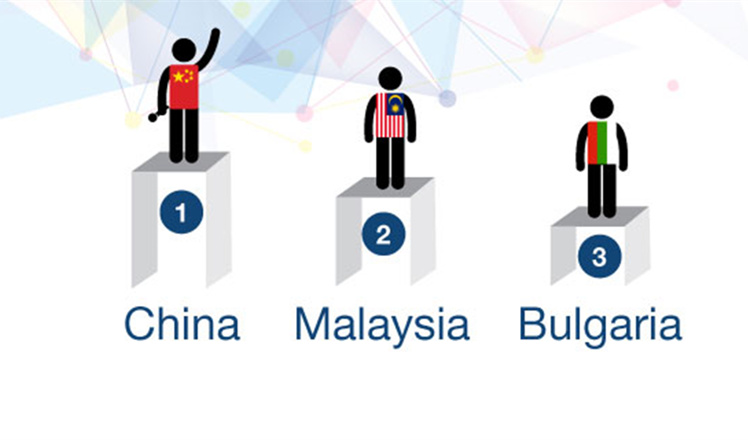Cities need 'low-end' workers to prosper
Updated: 2016-08-18 08:23
By LU MING(China Daily)
|
||||||||
 |
| Wang Xiaoying / China Daily |
Some people suppose industrial upgrading means waning demand for "low-end" workforce, and therefore urban areas should restrict the inflow of "low-end" workers by implementing a stricter household registration policy. This is a big misunderstanding.
It is not true that big cities with high labor productivity and high-income levels require few low-skilled workers. In fact, the concentration of high-skilled talents in one place increases the demand for low-skilled workers. The proportion of blue-collar workers should generally be higher in bigger cities compared with smaller ones.
High-skilled talents and low-skilled workers are complementary to each other. In a society with high division of labor, low-skilled workers can benefit from highly skilled talents and improve their lot. For instance, workers in the service industry who get more chances to serve foreigners can learn a foreign language faster than other workers. And the more people earn, the more they spend to get services, which in turn requires more low-skilled workers to serve them.
Research shows that in the United States, one post in a high-tech industry can create five posts in other industries-two in the comparatively high-end service industry (such as the medical and legal professions) and three in the consumption-centric service industry (such as retail and restaurants).
But unlike major US cities, their Chinese counterparts have failed to increase the employment of low-skilled workers. In major US cities, the proportions of high-skilled talents and low-skilled workers are both high, but that of middle-skilled workers is lower compared with smaller cities and towns.
The problem with middle-skilled workers is that despite being unable to compete with high-skilled talents, they are reluctant to do low-skilled work. That's why they are less likely to make big US cities their base.
Statistics show that China's big cities attract more high-skilled talents-but fewer low-skilled workers-than middle- and small-sized cities. This is not because China's big cities don't need low-skilled workers, but because they implement strict policies to restrict the inflow of such workers. Restricting the inflow of low-skilled workers in big cities, however, could have a negative impact on urban development.
When enterprises in big cities have difficulty in hiring low-skilled workers to render low-end services, they have to hire comparatively high-skilled people to do the jobs. That's the reason why some college students do menial work that could be accomplished by people with a high school diploma, and this is a waste of talent.
Since there are not enough low-skilled workers in the service industry to serve the high-skilled talents in big cities-and demand exceeds supply-there has been a rapid growth of salary in the service industry. And the high costs have forced many enterprises to keep the recruitment of low-skilled workers to the barest minimum.
As a result, high-skilled talents spend more time on service-oriented work instead of improving their productivity. And the decline of productivity of high-skilled talents undermines the competitiveness of an entire city.
Moreover, restricting the inflow of low-skilled workers in major cities also reduces migrant workers' consumption. Migrant workers save more money for future risks because they cannot be covered by the urban social security system. They don't spend money on durables, for they believe they will eventually have to return to their hometowns.
Restricting workers' mobility in urban areas also seriously distorts the demand and supply of labor, undermining economic growth and competitiveness of cities, as well as the well-being of urban residents.
So instead of restricting the inflow of migrant workers, city authorities should try to cope with the social problems related to labor mobility by enhancing infrastructure construction and public services, and improving their urban management.
The author is a professor at Antai College of Economics and Management in Shanghai Jiao Tong University.
- Malaysian authorities say ship carrying diesel hijacked
- Army commander: THAAD would 'easily affect' China-US ties
- Twin panda cubs confirmed born in Vienna zoo
- Four killed in boat collision in Greece
- Premier Li to receive Aung San Suu Kyi
- S Korean president names 3 new ministers for partial reshuffle

 China edges Brazil in volleyball quarterfinals
China edges Brazil in volleyball quarterfinals
 China's women's table tennis team sweeps gold
China's women's table tennis team sweeps gold
 Artists build sand sculptures to greet upcoming G20
Artists build sand sculptures to greet upcoming G20
 Top 10 biggest auto makers of 2015
Top 10 biggest auto makers of 2015
 British dad turns breakfast into work of art
British dad turns breakfast into work of art
 China inches up Global Innovation Index 2016
China inches up Global Innovation Index 2016
 Female soldiers on Frigate Jingzhou
Female soldiers on Frigate Jingzhou
 Synchronized swimming duo advances into final
Synchronized swimming duo advances into final
Most Viewed
Editor's Picks

|

|

|

|

|

|
Today's Top News
Trump outlines anti-terror plan, proposing extreme vetting for immigrants
Phelps puts spotlight on cupping
US launches airstrikes against IS targets in Libya's Sirte
Ministry slams US-Korean THAAD deployment
Two police officers shot at protest in Dallas
Abe's blame game reveals his policies failing to get results
Ending wildlife trafficking must be policy priority in Asia
Effects of supply-side reform take time to be seen
US Weekly

|

|









